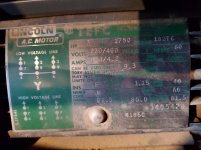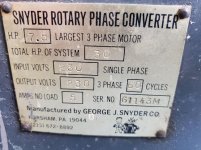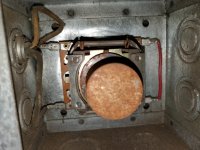Long time lurker, first time poster.
Recently I added some equipment to my home shop. 17 ton Diacro press brake and a 52-12 hydraulic metal shear.
I have a 30hp RPC that has always run my mill just fine. Installed a 3 phase panel to add machines. My press brake and mill are hooked up and running fine. Bump started the shear to check motor direction and the 12 gauge wires feeding it heated up very hot, seal tight conduit was smoking. Disconnected and rewired with new wires, Started up and ran fine. After sitting for a few days I started the converter to turn the Brake on and the wires feeding the shear heated up again (Shear was not turned on). As hot as the wires were it did not trip the breaker.
We've tested voltages, transformer and starter with no positive diagnosis. Polyphase is not on the transformer.
What would be causing such a power draw that it would heat up the wires without tripping the breaker?
Starter is a Telemecanique # A203B.
Recently I added some equipment to my home shop. 17 ton Diacro press brake and a 52-12 hydraulic metal shear.
I have a 30hp RPC that has always run my mill just fine. Installed a 3 phase panel to add machines. My press brake and mill are hooked up and running fine. Bump started the shear to check motor direction and the 12 gauge wires feeding it heated up very hot, seal tight conduit was smoking. Disconnected and rewired with new wires, Started up and ran fine. After sitting for a few days I started the converter to turn the Brake on and the wires feeding the shear heated up again (Shear was not turned on). As hot as the wires were it did not trip the breaker.
We've tested voltages, transformer and starter with no positive diagnosis. Polyphase is not on the transformer.
What would be causing such a power draw that it would heat up the wires without tripping the breaker?
Starter is a Telemecanique # A203B.







